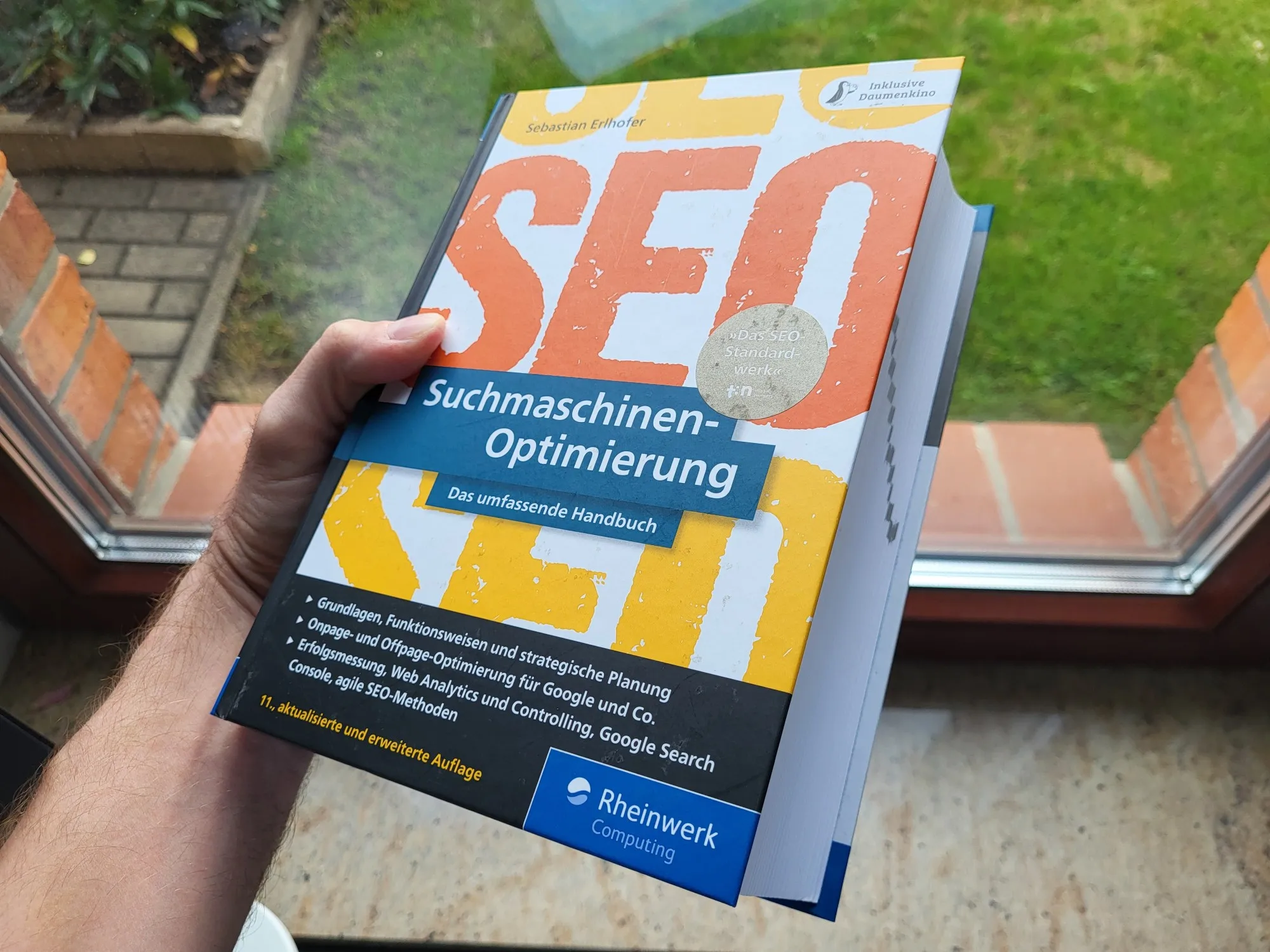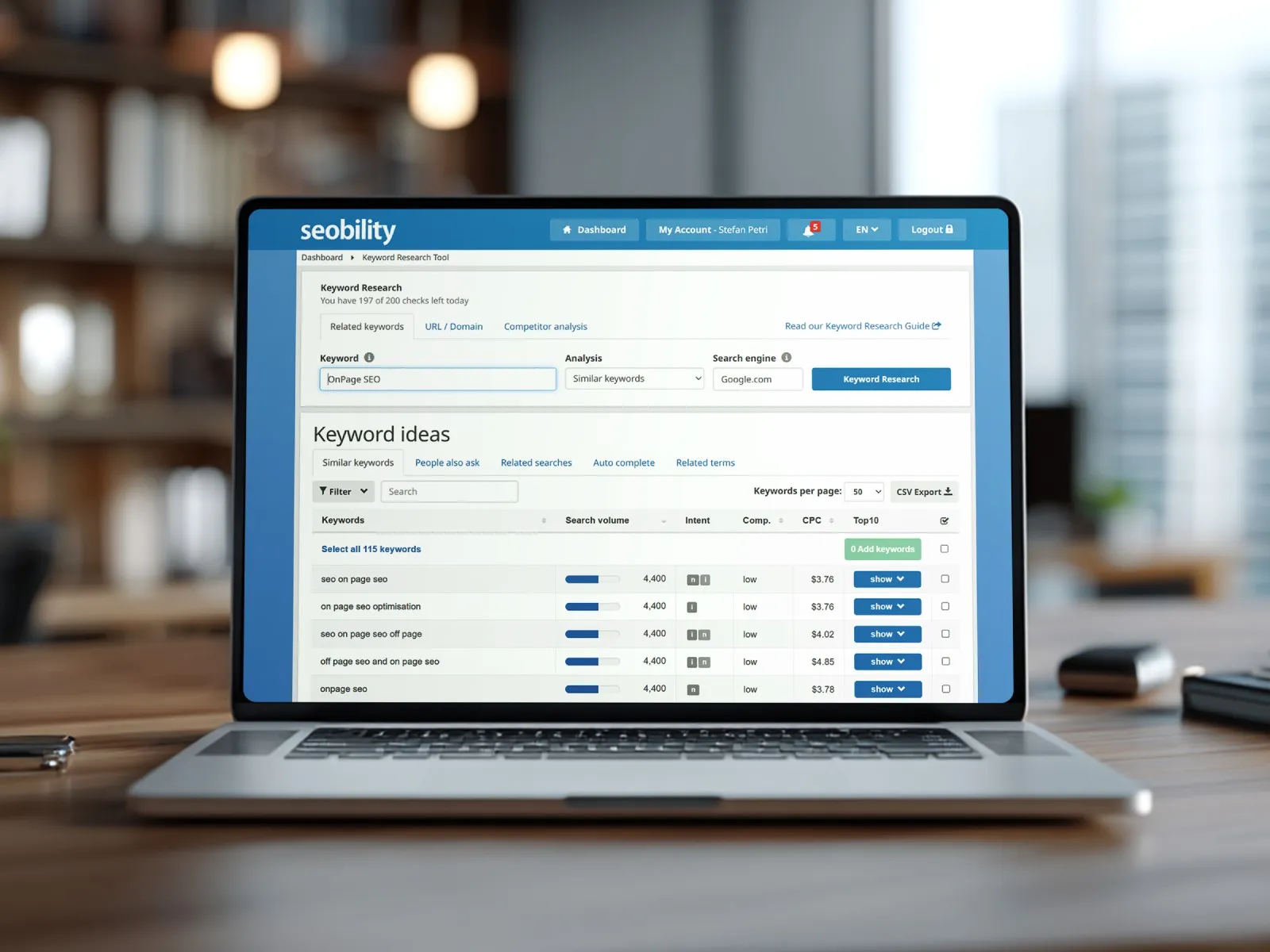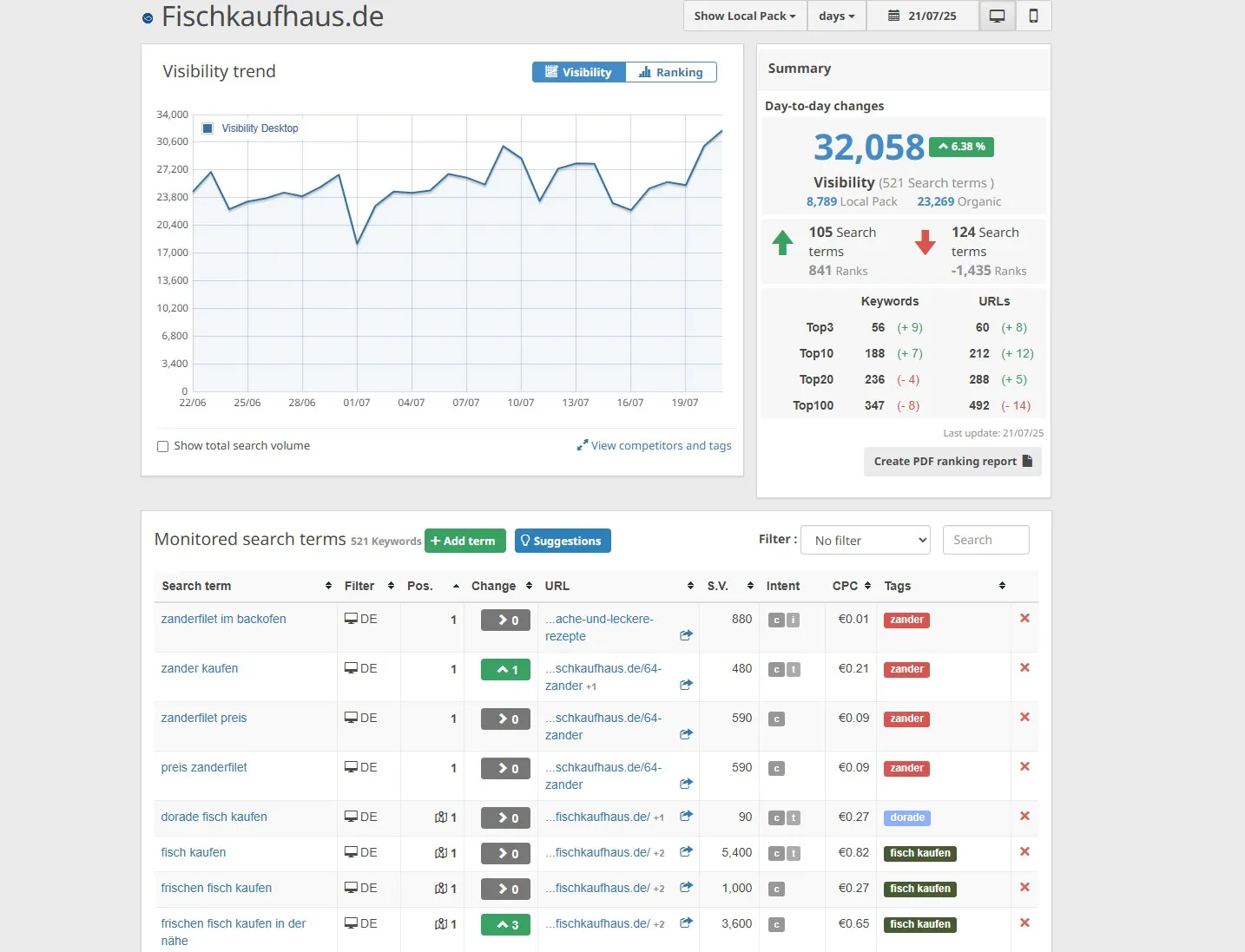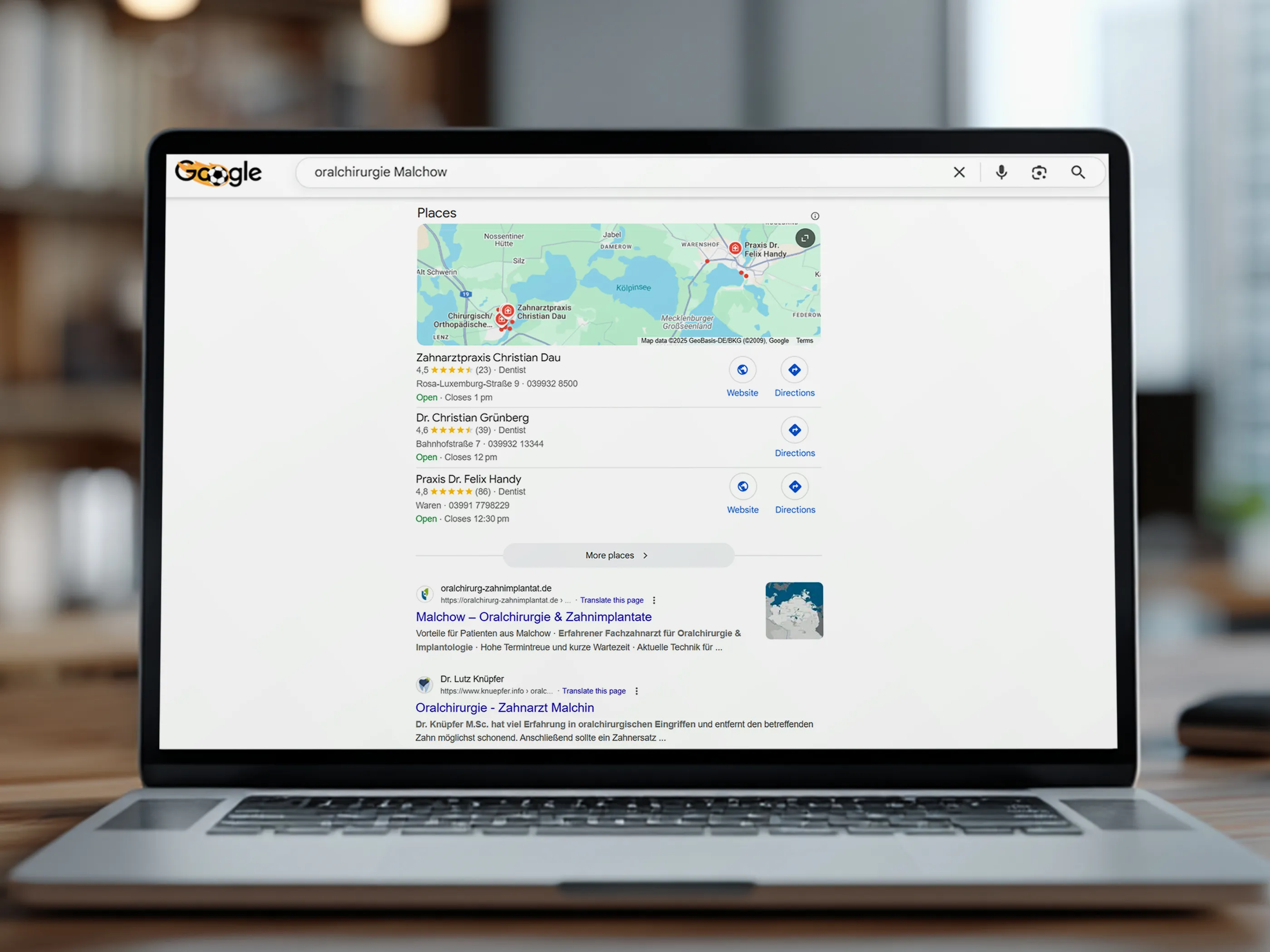Hi, I'm Vitalii Shynakov, 37 years old - not so old that I'm constantly saying "everything used to be better", but also not so young that I claim to know everything and be an SEO senior with two years of experience (irony on 😄). I've been involved in SEO and online marketing since 2012 - 13 years already. I loved this industry even before SEO became mainstream and everyone suddenly called themselves a "digital expert".
I still remember the days when I opened my first online store and transport companies didn't yet have APIs for integration. The most modern CMS back then was Joomla, and we were as excited about every new module as children about new toys. Yes, I'm one of those "old-school" SEOers who still remembers the time before Google's Panda and Penguin updates 😄
SEO is like teenage sex: everyone talks about it, no one knows exactly how to do it, everyone thinks everyone else is doing it, so everyone pretends they're doing it too.
SEO community
It happens all the time: I meet friends, acquaintances, colleagues. They find out what I do for a living, pull out their cell phone and proudly show me: "Look what website I've built! What do you think?" It's usually a piece of work that was quickly cobbled together with some website construction kit.
And then the magic begins: "Listen, you're an SEO expert! Tell me quickly what I need to do to get my website into the top 3 and get the sales going?" And they look at me hopefully, expecting a 5-minute consultation with the magic tip after which their favorite project will take off in the search results like a SpaceX rocket.
I used to start explaining that it's not that easy, that SEO is a process, that it takes time.... But I could see the disappointment in their eyes. Lately, I've been making it easier: I send them the link to a good SEO book and say, "For the minimal investment of a book price, you'll at least get an idea of what SEO is, what its goals are, the means to achieve those goals and the time it takes."

But I understand - not everyone is willing to read 1200-page tomes. That's why I've decided to present the basics in a "10 SEO commandments" format for those who want to get a quick understanding of the fundamental principles. If you follow these commandments, you can theoretically achieve certain results.
Important: This is not a "magic pill for top rankings in a week". This is the foundation on which successful SEO is built. Ready? Let's go!
Table of contents
- Commandment I: Do not create your website without first researching the market
- Commandment II: Don't choose a kit of free services, but choose WordPress as your master
- Commandment III: Don't neglect the right design, because it determines the technical optimization
- Commandment IV: You should create the keyword clustering before filling your website with content
- Commandment V: You should fill your website for humans and not for search robots
- Commandment VI: Thou shalt create a content strategy for a year, for consistency is pleasing to Google
- Commandment VII: You should monitor the position changes of your website daily with your morning coffee
- Commandment VIII: You should monitor Google PageSpeed, because loading speed is the most important factor
- Commandment IX: Strengthen your website with internal linking and righteous external links
- Commandment X: Thou shalt not neglect local SEO, for in it lies hidden great power
- Conclusion: The road to SEO compliance is not easy, but fruitful
Commandment I: Do not create your website without first researching the market
For it is written in the marketing scriptures: "Do not build your house on the sand of ignorance, but lay the foundation on the rock of market research." Blessed is he who recognizes supply and demand before creating his website, for many create in the dark and reap emptiness.

Simply put, before you create a website, you absolutely must research your market. It's called a business plan, and without it, you're building castles in the air.
What to do: Register with SEMrush, Ahrefs or SimilarWeb (all have a free trial period). Check how many people search for your products or services each month. Collect the maximum number of keywords for your topic.
The brutal truth: even if you rank in the top 3 for all your keywords, you'll only get about 3% of the total search traffic. Yes, that little. Yes, that's true.
The even more brutal truth: A good conversion rate to purchase is 2%. Most of the time only 1%.
I don't want to clip your wings before you've even tried to fly, but I believe in you. Assess your strengths realistically. Work out how much you need to sell to recoup the SEO costs. If the figures don't scare you off - then keep going!
Commandment II: Don't choose a kit of free services, but choose WordPress as your master
For it is written: "He who builds on Tilda and other construction kits builds on shaky ground, and the path of his website in the search engines will be slow." Mention WordPress or pure code, so that the speed of your store may go to heaven and not to the hell of slow servers.
Simply put, if you're not put off building a website after the first step, at least don't choose free website builders. Take WordPress as a minimum.
Why this is so important: The more popular the platform, the more developers and ready-made modules there are for it. This makes everything cheaper for you. It's easier to find help if something doesn't work.
The technical reason: WordPress has a sophisticated update system. The longer your project runs, the more frequently you have to carry out updates - for security and new functions. With exotic systems, this quickly becomes a nightmare.
My experience: I have seen too many projects that were built on proprietary systems or cheap construction kits. After 2-3 years, maintenance becomes a horror and the entire system has to be redone. Save yourself the pain from the start.
WordPress is not sexy, but it works. And for SEO, it's a solid foundation you can build on.
Commandment III: Don't neglect the right design, because it determines the technical optimization
For it is written in the writings of webmasters: "Good design is like a solid foundation stone of the house on which optimization can easily be built." Blessed is he who invests in quality design, for the programmer will find it easy to optimize speed, images and fonts. But woe betide those who buy cheap design, because they will be plagued with technical problems until the end of their project.

Simply put: although design does not directly influence SEO, the right design determines your entire further technical optimization. It's a one-time investment, but a very important one.
Why this is critical: If you buy a good, technically well thought-out design, it will be many times easier for the programmer to optimize the loading speed, set the correct loading of images and integrate fonts without braking effect.
My experience: I have worked with websites where the designer painted a beautiful picture but didn't think about the technical implementation. The result - images with 5MB each, 20 different fonts, animations that kill the performance.
Practical tip: Ask the designer about their experience with web projects when making your selection. Ask them to show you websites they have made and check their speed in PageSpeed Insights. If everything there is red - run away from such a designer.
Good design will save you a lot of money when it comes to optimization later on.
Commandment IV: You should create the keyword clustering before filling your website with content
For it is written in the books of the SEO sages: "He who begins to build without surveying the land builds chaos. But he who divides the keywords among his pages creates order." Don't use more than two or three keywords on a page so that everything doesn't get mixed up before Google's eyes. The structure should be understandable and as simple as the commandments of Moses.
Simply put: before you start filling your website with content, do a keyword clustering. Determine which keywords belong on which pages.
Here's how it works: divide all the keywords you've collected into groups:
- Which ones go on categories and subcategories
- Which ones go on product pages or service pages
- Which go on informative articles
- Which ones go on additional landing pages
The golden rule: Don't use more than 2-3 keywords per page. Otherwise you'll end up with a mess and Google won't understand what it should rank you for.
My experience: I have seen many websites where people have tried to squeeze 10 different keywords onto one page. The result - the page doesn't rank correctly for a single search term.
Practical tip: Create a simple table: In one column the keywords, in the other the URLs of the pages where they go. The structure should be understandable and logical.
Commandment V: You should fill your website for humans and not for search robots
For it is said in the algorithmic revelations: "Whoever writes for humans also pleases Google. But those who write for robots, hoping for the mercy of the search engines, are mistaken." The most important factor for Google is user behavior: how long they stay on the site, how many pages they view per session. Make content for people and people will come to you.

Simply put: fill your website with content for people. If you're writing for the Google bot in the hope that it will get your website into the top rankings - you're wrong.
The central truth: you're always fighting for the visitor's attention, not the robot's. Google looks at behavioral factors: how long the user stays on the page, how many pages they look at per session, whether they return to the site.
What does NOT work: Content generated by ChatGPT just to fill empty space with text. Keyword stuffing. Text that sounds like robot instructions.
What works: Content that really solves your customers' problems. Text that is interesting to read. Information that makes people come and stay.
My test: Read your text out loud. If it sounds like a robotic prayer - rewrite it until it sounds human. If it is boring for you to read - it will be even more boring for visitors.
Commandment VI: Thou shalt create a content strategy for a year, for consistency is pleasing to Google
For it is written in the chronicles of the search engines: "Google loves those who constantly have new articles appearing on their website. And the loyal users will come looking for new and interesting content." Shepherd your community with fresh content like a shepherd shepherds his sheep with green grass.
Simply put: create a content strategy for a year in advance. This is the basis of the SEO strategy for adding new material with new keywords on a scheduled basis.
Why it's necessary: Google sees that the website is evolving, new pages are being created for new search queries. Every new article is an opportunity to get into the top rankings for additional keywords.
The main advantage: content marketing is the only white-hat SEO method today without risks to increase traffic, regular users and brand awareness on schedule. All other methods are either risky or only have short-term effects.
My experience: In our agency, we have an entire content department: designers, copywriters, video creators and video editors. We have content plans for months in advance - both for our clients and for our own projects.
Practical approach: Can't afford a whole department? Start small. Create a plan for at least 3 months: which topics, for which keywords, in which format.
What to plan:
- Articles for new keywords from your list
- Answers to customer questions (become long-tail search queries)
- Seasonal content (relevant for many niches)
Regular, quality content is a marathon, not a sprint.
Commandment VII: You should monitor the position changes of your website daily with your morning coffee
For it is written in the analytical writings: "He who does not know his positions walks in the darkness of ignorance. But he who follows the rankings daily sees the way to the top of the search mountains." Once a position has reached the top 10, keep it there by reinforcing it with articles and links. Work on the search queries that have not reached the top 100, because there is great potential hidden in them.

Simply put: track the position changes of your website every day. It won't take more than 5 minutes over your morning coffee, but it will give you a complete picture of the situation.
Practical strategy:
- Once a position has made it into the top 10 - keep it there. Strengthen this page with articles that link to it.
- Work on search queries that have not made it into the top 100. They have growth potential.
What else to monitor: In the same service you see technical errors, issues with meta tags and indexing. Solve them on the first day they occur.
My experience: I start the working day with the position check. It's like taking a temperature - it's immediately clear whether the project is healthy or sick. Position dropped by 10 points? Find out the reason immediately.
Tools: Serpstat, SE Ranking, Rush Analytics - all have practical dashboards with notifications about changes.
Position monitoring is the pulse of your SEO project.
Commandment VIII: You should monitor Google PageSpeed, because loading speed is the most important factor
Because it is written in the sacred codes of search engines: "Loading speed is important for both the user and Google. If you dawdle when loading, you lose visitors and the blessing of the algorithm." Monitor the Core Web Vitals - LCP, FID, CLS - the three pillars of the new ranking. Blessed is he whose website loads faster than a lightning-fast prayer.

Simply put, monitor Google PageSpeed constantly. Loading speed is a critically important factor for both users and Google.
What to monitor with Core Web Vitals:
- LCP (Largest Contentful Paint) - loading speed of the main content. Should be under 2.5 seconds.
- FID (First Input Delay) - Response time to the first user action. Less than 100 milliseconds.
- CLS (Cumulative Layout Shift) - Stability of the visual content. Less than 0.1.
Practical steps:
- Compress images (use WebP format)
- Minimize CSS and JavaScript
- Use CDN for static content
- Activate browser caching
My experience: I've seen projects that have lost 50% of their traffic after an algorithm update that takes speed into account. The website could be super-optimized in terms of content, but slow loading times ruined everything.
Tool: Google PageSpeed Insights - free, shows concrete recommendations for improvement.
Commandment IX: Strengthen your website with internal linking and righteous external links
For it is said in the teachings on page weight distribution: "A link carries power as a river carries water from its source to the sea." The PageRank formula says: PR(A) = (1-d) + d * Σ(PR(T)/C(T)), where d = 0.85. Many things can be solved by strengthening necessary pages with internal contributors. External links are important as they once were, but don't you dare buy them because Google knows all the fraudulent exchanges.
Simply put, internal linking and external links are the foundation of authority transfer between pages. You can achieve a lot here with the right strategy.
How the PageRank formula works: PR(A) = (1-0.85) + 0.85 * Σ(PR(T)/C(T))
Where:
- PR(A) - PageRank of page A (which we want to boost)
- 0.15 - Base value for each page
- 0.85 - Coefficient of weight transfer through links
- PR(T) - PageRank of page T (which links to A)
- C(T) - number of outbound links from page T
Simple example: If a page with PageRank 10 links to 5 other pages, each receives 10 * 0.85 / 5 = 1.7 weight units.
Internal linking: Link from strong pages (that are already in the top rankings) to weak pages that you want to push.
External links - Caution: Do NOT buy them on exchanges! Google knows which websites do this.
What works (offpage SEO):
- Specialized forums
- Link exchange with partners
- Guest posts on authoritative resources
Commandment X: Thou shalt not neglect local SEO, for in it lies hidden great power
Because it is written in the cartographic scriptures: "Many underestimate the power of local SEO, but it is one of the easiest ways to increase traffic through Google Maps." Create your Google Business Profile and ask people you know from school, college, work and sports to leave reviews. 200 reviews are easy to create and you'll see local customers appear. Create landing pages for big cities - it's easy and quick, but few do it.

Simply put, local SEO is one of the most underrated and easiest ways to attract customers. And most people ignore it.
Google Business Profile: Be sure to create one and fill it out completely. Add photos, opening hours, description, categories. Google shows these cards at the top of the search results for local queries.
Reviews - your secret weapon: Ask people you know from school, university, work, sport, relatives for reviews and comments. Organizing 200 of them yourself is realistic in one to two months. And you'll see local buyers show up.
Landing Pages for cities: Create separate pages for major German cities with local keywords: "buy laptop Berlin", "buy laptop Munich", "buy laptop Hamburg", "buy laptop Cologne", "buy laptop Frankfurt". It's so easy and quick, but why does hardly anyone do it?
Buyer psychology: People first search for "where to buy nearby", but actually buy where it is cheaper. Pick him up with the local search, then convince him with price and conditions.
My experience: clients who have implemented local SEO get 10-20% of their traffic from local searches and Google Maps. And conversion from local traffic is higher - people are already ready to buy.
Conclusion: The road to SEO compliance is not easy, but fruitful
This is just a small part of what I would like to share with you after 13 years of SEO work. If you found it interesting - I'm glad. If you think it's all quick and easy - I'm going to disappoint you.
The hard truth about SEO: it's not magic that works in a week. It's planned, systematic work that takes months. You will see the first results after 3-6 months. Stable results - after a year.
But there is also good news: If you follow these commandments consistently, the results will definitely come. I've seen this hundreds of times on our clients' projects and on our own websites.
What happens next? If you've read to the end - you're no longer the person waiting for a magic pill. You understand that there is work ahead of you. And I believe in you.

And if you want to entrust SEO to the professionals...
We at the 4eck Media agency have been doing this every day for over 10 years. We have the content department I wrote about, a team of technical specialists and analysts. We know how to make these bids work for your business.
Go to our agency's website and order SEO from us: 4eck-media.de
Remember: SEO is a marathon, not a sprint. But if you run it to the end, you will win prizes that are worth all the effort.
May high positions be with you! Amen. 🙏

